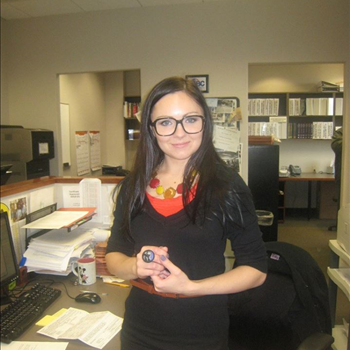Right Now
What Is Posturing After Vitrectomy?

Modern eye surgery is often a painless treatment, with discomfort reduced both during and after the operation. Local anesthesia guarantees that there is no discomfort during the procedure, although a small eye soreness and moderate eye surface irritation (akin to having something in your eye) are frequent thereafter.
This irritation progressively resolves over the postoperative period, and there is no anticipation of growing pain or discomfort at any time after surgery. While this is true for most eye procedures, some eye problems need specialized post-operative care to ensure a satisfactory outcome.
Posturing is occasionally necessary after vitrectomy surgery, and it can cause major interruptions to a patient's everyday activities as well as comfort issues. Before undergoing vitrectomy surgery with posture, it is critical to have good organization and preparation, as well as methods to overcome any potential problems.
What Is Posturing, and Why Is It Important?
Posturing refers to post-surgery treatment in which a patient keeps their head in a precise posture to enhance the effectiveness of their procedure. This head posturing can occur throughout both waking and sleeping hours and how a patient is expected to posture varies depending on the disease under treatment.
Following a vitrectomy procedure, the eye is partially filled with air. For diseases like retinal detachment or macular hole, the eye is entirely filled with air and then replaced with a gas that presses on the area being treated. If you've undergone macular hole surgery, the region being treated is in the rear of your eye.
This gas generates a bubble in your eye that floats upward, much like a bubble in a carbonated beverage. If you stay upright, the gas bubble will not fully push on the macular hole at the back of your eye, and the macular hole may not seal.
The only way for the gas bubble to push against the macula is to stare vertically down at the floor. One of the simplest methods to achieve this is to lean your head slightly forward and stare straight down to the floor. This is known as the face-down stance, but I like the phrase "eyes-down" since it keeps the eyes gazing in the right direction without straining your neck by bowing your head down all the way in front. I normally ask for 50 minutes of posture every hour for five days while you are awake.
Daily Activities and Sleeping
Face down ("eyes down") posture is only necessary during the awake hours, not during sleeping. It is advisable to sleep on either side or on your front, but not on your back, since this will cause the bubble to shift away from the macular hole. To avoid rolling onto your back while sleeping, position cushions behind you or even pin a tennis ball in a sock behind your back.
Walking following surgery is permitted and recommended for health reasons; this is accomplished by staring vertically downwards while walking and attempting to keep your head as erect as possible.
How Do I Best Prepare for Posturing?
Here are some excellent recommendations to help you prepare for posture:
Consider hiring equipment that will help you with posture as soon as you know the date of your surgery. If you decide to do so, it is recommended to hire the equipment many days in advance to assist you prepare;
Plan out how you will prepare and eat meals. Because you only have 10 minutes available every hour, you will frequently require the aid of others;
Organize your toiletries and medications so that they are conveniently accessible without raising your eyes or head;
Make sure your kitchen gadgets (such as a kettle, toaster, and coffee maker) are kept low so you can prepare dishes and beverages without assistance;
Make sure you have straws on hand to assist you sip cold beverages. Prepare a variety of clean, comfortable attire for the posing time.
More Posts



















Map
Amelia Grant
Get DirectionsAmelia Grant
-
31-57 37th St
Long Island City, New York 11103
United States - 6462709836
Report This Post
Please complete the following requested information to flag this post and report abuse, or offensive content. Your report will be reviewed within 24 hours. We will take appropriate action as described in Findit terms of use.


